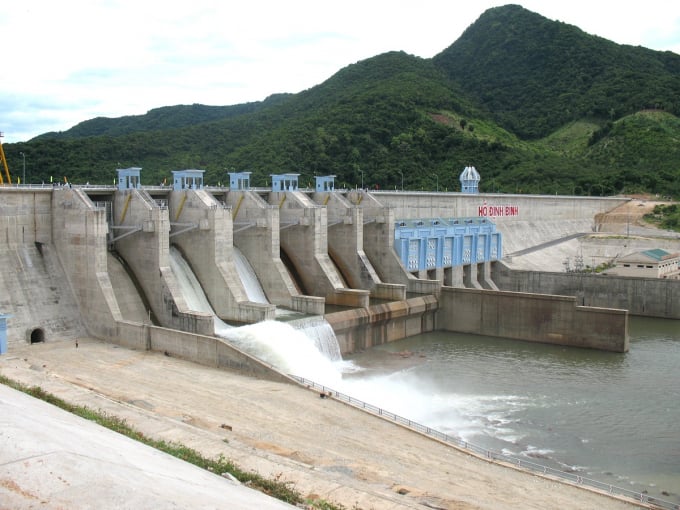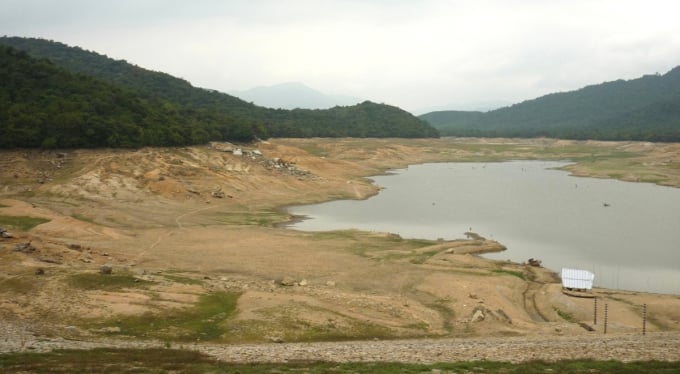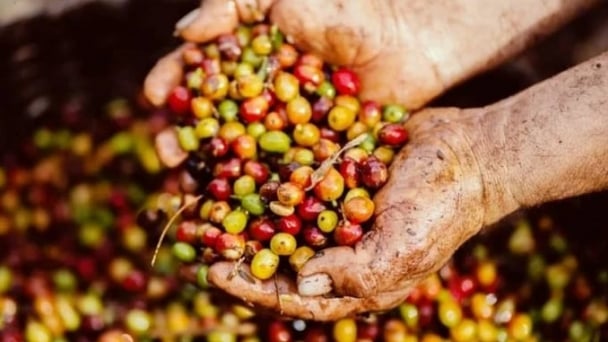June 18, 2025 | 11:41 GMT +7
June 18, 2025 | 11:41 GMT +7
Hotline: 0913.378.918
June 18, 2025 | 11:41 GMT +7
Hotline: 0913.378.918
Binh Dinh Province currently has 163 large and small reservoirs including 61 large reservoirs, 37 medium reservoirs and 65 small ones.
According to Mr. Ho Dac Chuong, Deputy Director of Binh Dinh Department of Agriculture and Rural Development, most of the reservoirs in Binh Dinh were built about 50 years ago and they are mainly small reservoirs.
As Binh Dinh is a province with a lot of mountains, especially the western part of the province running along with the Truong Son mountain range from North to South, the overlapping mountains have created harsh topographic which create unfavourable conditions to build a large-capacity irrigation lake.
“Binh Dinh has a specific irrigation plan but it’s difficult to find locations to build large reservoirs depending on the demand and geographic conditions,” he said, adding that building large reservoirs were not effective.
So, the province based on the mountainous terrain builds small reservoirs to meet the water demand for irrigation for agricultural production. Up to now, each production crop, the reservoir network in Binh Dinh have provided water for 48,000 hectares of rice and tens of thousands of hectares of crops, meeting the requirements of small, non-concentrated production areas," he said.

Dinh Binh lake in Vinh Thanh district was proposed by Binh Dinh People's Committee to the Ministry of Agriculture and Rural Development to upgrade shortly. Photo: V.D.T.
In addition, most of the reservoirs in Binh Dinh were built during the difficult period of the country, so the level of investment at that time was difficult to meet requirements, plus the construction level was still limited. After nearly 50 years of operation, many of the reservoirs have been degraded. Especially when the spillways have been degraded, the flood drainage capacity cannot meet the safety requirements.
Moreover, the reservoirs in Binh Dinh were built according to the design more than 40 years ago, so now the spillways have become obsolete in response to changes due to climate change.
For example, now rainfall has become more extreme, so it is necessary to discharge the flood with a larger volume, while the spillway built according to the old design does not meet the requirements.
In addition, the flood drainage corridor protecting the works of the reservoirs is no longer secure, especially the corridor after the overflow.
From 2016 up to now, thanks to the funding of the WB8 project, there are 16 reservoirs in Binh Dinh that have been upgraded and repaired. The objective of the project is to support the implementation of the Government's programme to ensure the safety of reservoirs and dams as well as strengthen the management and safe operation of dams at the national and system levels to protect the downstream population and infrastructure, economy and society.

Most of the reservoirs in Binh Dinh are small ones, built after 1975. Photo: V.D.T.
“From 2021 to 2025, the People's Committee of Binh Dinh province will continue to invest in many technical infrastructure projects integrated with natural disaster prevention and control. Upgrading 12 reservoirs with provincial budget capital and 14 reservoirs from MARD; repairing 6 surge dams to increase flood drainage and improve operating conditions; to build new Phu Phong weirs on the Kon river,” Chuong said.
“The province will build an anchorage area for boats to stay and avoid storms for fishing boats in De Gi lagoon. At the same time, Binh Dinh province continues to request the Ministry of Agriculture and Rural Development to invest in upgrading Dinh Binh and Nui Mot lakes to cut floods and reduce flooding for the downstream," he said.
Translated by Hien Anh
![Turning wind and rain into action: [8] Real-time salinity detection and early warning technology](https://t.ex-cdn.com/nongnghiepmoitruong.vn/608w/files/news/2025/06/17/z6704423696987_15fd32ffc26d590d204d520c9dac6786-nongnghiep-151127.jpg)
(VAN) Thanks to the integration of modern hydrological-hydraulic models, remote sensing technologies, and artificial intelligence, the accuracy of hydrological forecasting has significantly improved.
![Turning wind and rain into action: [7] Early disaster warnings help marine farmers minimize losses](https://t.ex-cdn.com/nongnghiepmoitruong.vn/608w/files/news/2025/06/17/z6704423696987_15fd32ffc26d590d204d520c9dac6786-nongnghiep-142942.jpg)
(VAN) In recent years, thanks to early disaster warnings and forecasting, marine farmers in Khanh Hoa province have been able to reduce risks and losses, thereby improving production efficiency.
![Turning wind and rain into action: [6] ‘Four on-the-spot’ disaster management software](https://t.ex-cdn.com/nongnghiepmoitruong.vn/608w/files/news/2025/06/17/e5a48259d6a262fc3bb3-nongnghiep-183800.jpg)
(VAN) By simply activating the scenario on the disaster management software, the relevant authorities immediately know how many households need to be evacuated, where to evacuate them to, and by what means of transportation…
![Turning wind and rain into action: [5] Hue applies modern technology in disaster forecasting](https://t.ex-cdn.com/nongnghiepmoitruong.vn/608w/files/news/2025/06/17/z6704423696987_15fd32ffc26d590d204d520c9dac6786-nongnghiep-093938.jpg)
(VAN) In Hue city, modern technology has recently been applied in meteorological and hydrological forecasting and warning, helping to reduce the damage caused by natural disasters.

(VAN) A cutting-edge farming technique being implemented on an experimental ranch in Arizona's Sonoran Desert has already saved a billion gallons of water over five years, according to Civil Eats.

(VAN) Poultry and pig production and the environment can be boosted through enhanced water technology, according to new research.

(VAN) Coffee prices on June 16, 2025 are unchanged. In Vietnam, local trading prices are holding steady, ranging around VND 112,000 – VND 112,500/kg.